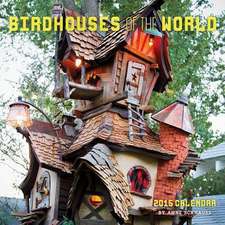Information and Creation: Integrating the “Two Cultures”
Autor German Golitsyn, Vladimir Petroven Limba Engleză Paperback – 26 apr 2012
Preț: 384.31 lei
Nou
Puncte Express: 576
Preț estimativ în valută:
73.54€ • 76.63$ • 60.89£
73.54€ • 76.63$ • 60.89£
Carte tipărită la comandă
Livrare economică 03-17 aprilie
Preluare comenzi: 021 569.72.76
Specificații
ISBN-13: 9783034874748
ISBN-10: 303487474X
Pagini: 200
Ilustrații: XII, 188 p.
Dimensiuni: 170 x 244 x 11 mm
Greutate: 0.33 kg
Ediția:Softcover reprint of the original 1st ed. 1995
Editura: Birkhäuser Basel
Colecția Birkhäuser
Locul publicării:Basel, Switzerland
ISBN-10: 303487474X
Pagini: 200
Ilustrații: XII, 188 p.
Dimensiuni: 170 x 244 x 11 mm
Greutate: 0.33 kg
Ediția:Softcover reprint of the original 1st ed. 1995
Editura: Birkhäuser Basel
Colecția Birkhäuser
Locul publicării:Basel, Switzerland
Public țintă
ResearchCuprins
1: Information and adaptation.- 1.1 Mutual information.- 1.2 Valuable information.- 1.3 Principle of the information maximum.- 1.4 Expansion: Principle of the entropy maximum.- 1.5 Adaptation as organization.- 2: Evolution and creation.- 2.1 Life.- 2.2 Reflexion as a factor of evolution.- 2.3 Memory.- 2.4 Response of the system to a new stimulus.- 2.5 Conditions of the informational interaction. Threshold.- 2.6 Emotions.- 2.7 Perception and pattern recognition.- 2.8 Consciousness.- 2.9 Thinking.- 2.10 Creation.- 2.11 Intuition and logic.- 3: Mechanisms of language.- 3.1 Language: How many mechanisms are involved?.- 3.2 From pre-linguistic mechanisms — to language.- 3.3 On language as one of the roots of literature.- 3.4 The sound structure of language: Choice of the information channel.- 3.5 Phonetic structures: Possible ideal types.- 3.6 Possible evolution of sound structures.- 3.7 At the final step of evolution.- 3.8 Physical realization of speech communication.- 4: Construction of the aesthetic sphere.- 4.1 Natural objects: Absolute and conventional criteria.- 4.2 Artificial objects: By-product and special perfecting impacts.- 4.3 Concrete images and art.- 4.4 Objects’ features, signs, and art.- 4.5 Emotional impact of art: Social aspect.- 4.6 The «Hamburg score» of art.- 5: Devices of art.- 5.1 How to attract attention?.- 5.2 How to keep attention? Nuance.- 5.3 How to switch attention? Contrast.- 5.4 Laws of harmony: Golden section.- 5.5 Temporal structures in poetical works: Theoretical considerations.- 5.6 Temporal structures: Experimental results.- Towards a human integral culture (concluding remarks).







